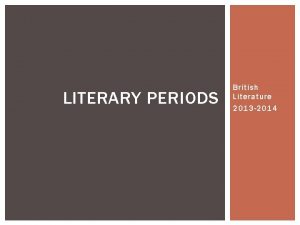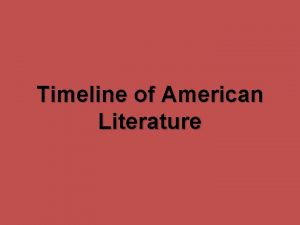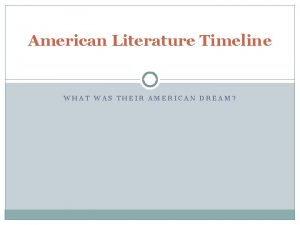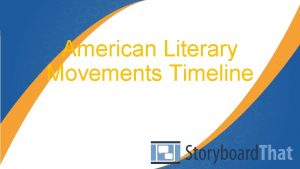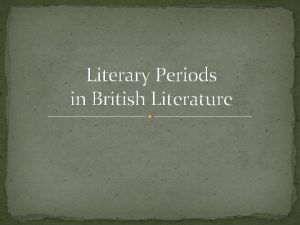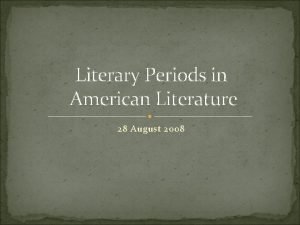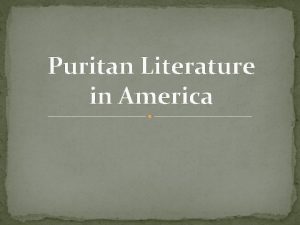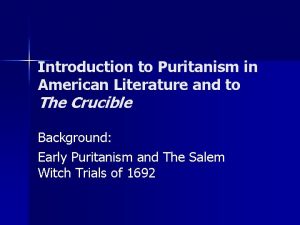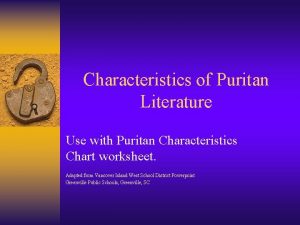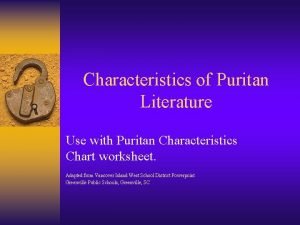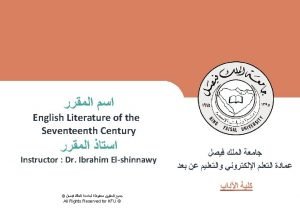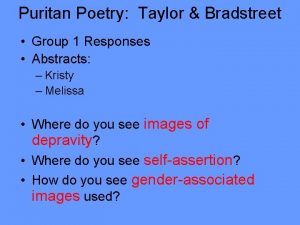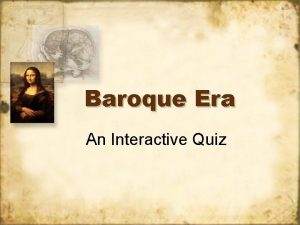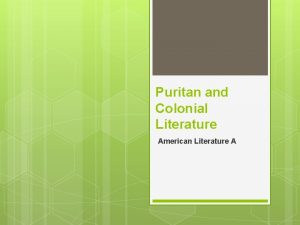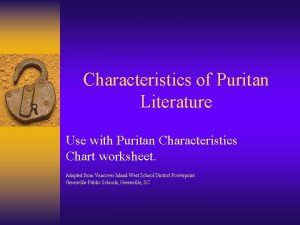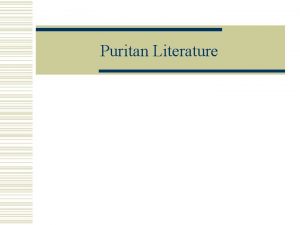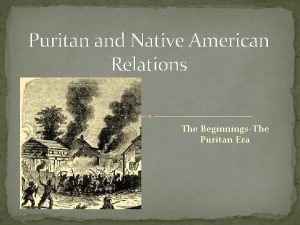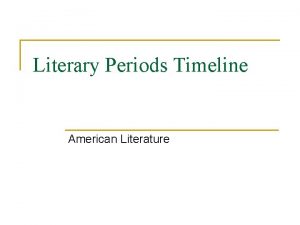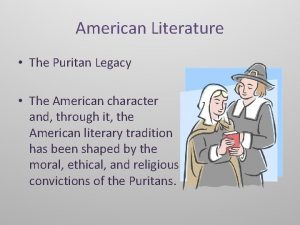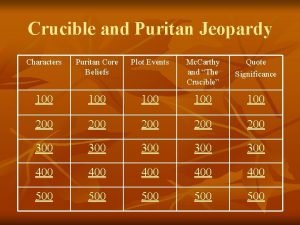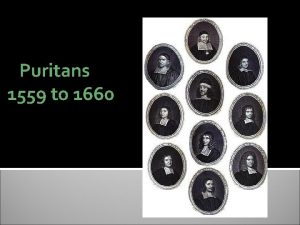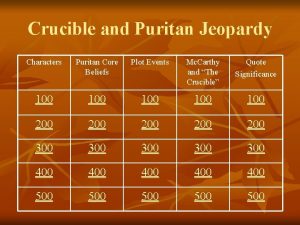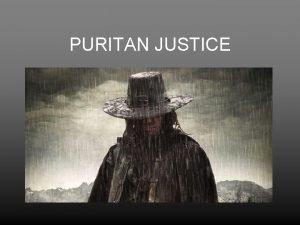Literary Eras American Literary Era Timeline Puritan Literature

















- Slides: 17

Literary Eras

American Literary Era Timeline

Puritan Literature 1620 -1728

Puritan Genres • Sermons • Poetry • Historical Narratives

Characteristics of Puritan Literature Puritans' religious beliefs affected their lives on all levels, and their writing illustrated their religion's values, such as the importance of the church and the influence of God in their lives. • Believed that God was working in their daily lives • Would search for symbols in their daily life that God was with them • A woman accidentally burning a shirt may represent the fact that God was preparing her for the future death of her husband. • Preached a separation from worldly pleasures

Puritan Concepts • A main tenant of Puritan literature centers around the idea of predestination. • Predestination: God has predetermined which souls will be saved and which won’t, and this decision can’t be altered.

Puritan Concepts • Total Depravity: Through Adam and Eve's fall, every person is born sinful - concept of Original Sin.

Puritan Style of Writing • 1. Protestant - against ornateness; reverence for the Bible. • 2. Purposeful- there was a purpose to Puritan writing (to teach, to preserve history, to glorify God…) • 3. Puritan writing reflected the character and scope of the reading public, which was literate and well-grounded in religion.

Anne Bradstreet (1612 -1672) • First notable American poet • Puritain woman were not encouraged to improve their minds or express their ideas • Sailed for Massachusetts in 1628 at age 18 with her husband, Simon Bradstreet. • Poetry focuses on her house, her husband, and her eight children • Poetry published in 1650 by her brother-in-law without her knowledge! • First book of poetry ever published by an American colonist.

Rationalism/Classicism/ Revolutionary Literature

Rationalism • 18 th C (1700’s) • Nature= a self-contained machine, whose laws could be rationally understood • Valued clarity, order, balance • Imagination had to be restrained by reason and common sense • Politics was a major concept

How Writing Changed • Writing was less private and religiously based • Writing was influenced by the Revolutionary War and the growing American spirit of individualism and selfreliance.

Rationalism • Authors of this period include Benjamin Franklin, Thomas Jefferson, Thomas Paine, Patrick Henry

Romanticism 1820 -1860

Romanticism 1820 -1860 • A continuation of the same movement in Europe • Authors focused on individualism, imagination, emotions, and nature. • Often set their works in distant times or places • Rebelled against the rationalism/classicism movement • Not surprisingly, this is the largest body of work to this point in history and one that we spend a lot of time studying in school

Romanticism Part 2 • Authors often associated with this movement include: Edgar Allen Poe, Nathaniel Hawthorne, Washington Irving, and Herman Melville • This movement contains several other movements (not confusing at all, is it? )

Dark Romanticism/Gothics -Is marked by a preoccupation with gloom, mystery, and terror. Often, but not always, it may involve the supernatural.
 Literature eras
Literature eras Literature eras timeline
Literature eras timeline Tener preterite vs imperfect
Tener preterite vs imperfect Prehistoric era
Prehistoric era The romantic period american literature
The romantic period american literature Puritanism timeline
Puritanism timeline Puritan timeline activity
Puritan timeline activity American literature timeline
American literature timeline American literary movements timeline
American literary movements timeline The georgian period 1910-1936
The georgian period 1910-1936 What are literary periods
What are literary periods Puritan beliefs
Puritan beliefs Puritanism in the crucible
Puritanism in the crucible Puritan literature characteristics
Puritan literature characteristics Puritan literature characteristics
Puritan literature characteristics Jacobean and caroline prose
Jacobean and caroline prose Characteristics of puritan age
Characteristics of puritan age Quiz 2 the baroque era
Quiz 2 the baroque era

